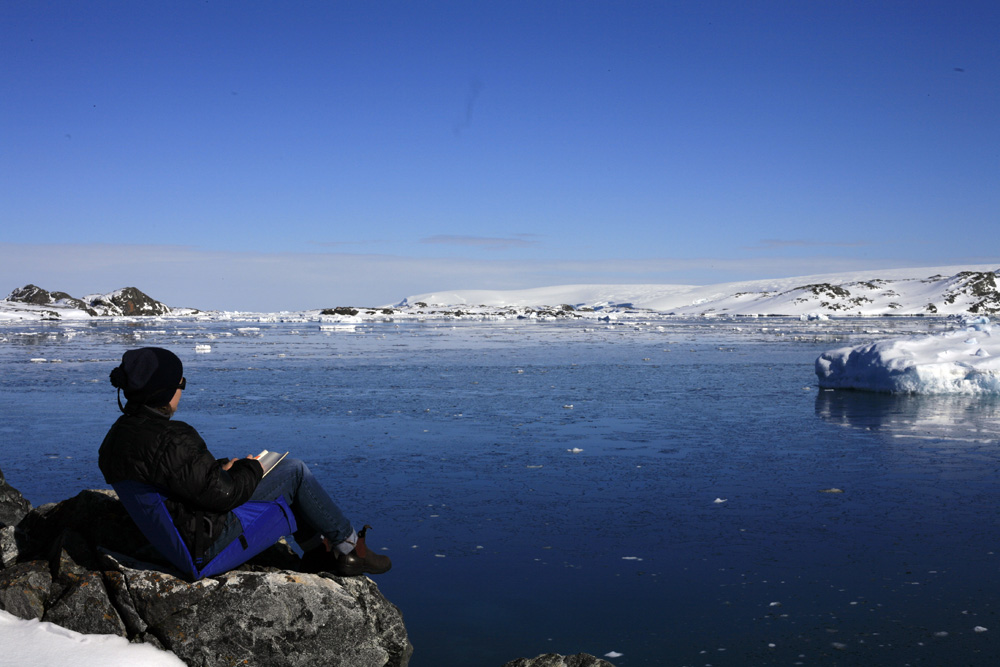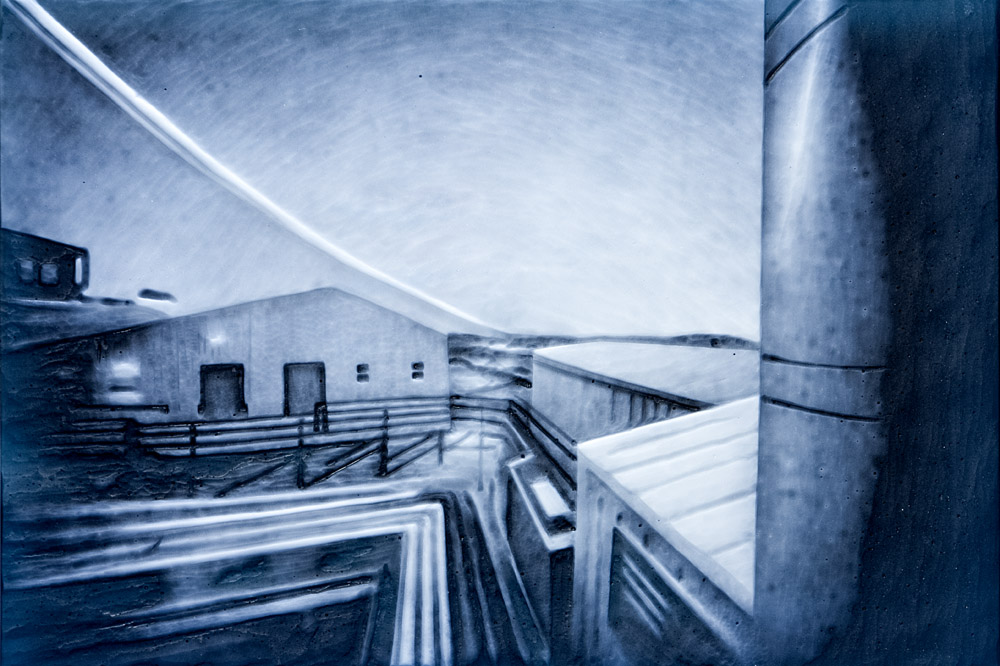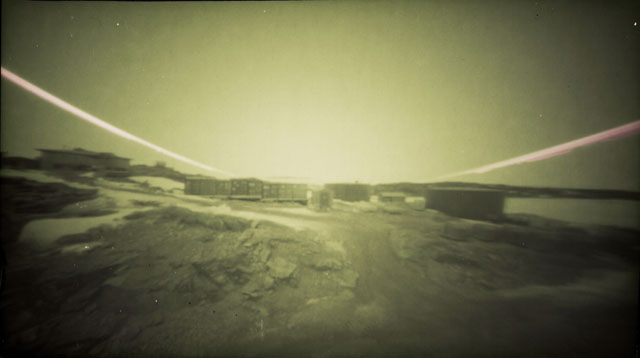Through the looking glassArtist employs rare techniques to evoke different views of AntarcticaPosted October 31, 2014
There’s a saying that necessity is the mother of invention. April Surgent discovered that being trapped by ice at a research station in Antarctica for the better part of two months required a little flexibility and ingenuity when it came to fulfilling her artistic vision. The Seattle-based artist traveled to Palmer Station last year with support from the National Science Foundation’s Antarctic Artists and Writers Program. The coastal research station, accessible only by ship, was surrounded by unusually heavy sea ice well into the Southern Hemisphere summer. That meant Surgent, an artist who engraves glass, and the scientists doing research out of Palmer Station had limited opportunities to visit the nearby islands where penguins, seals and other Antarctic fauna breed and brood during the summer months of November and December. Surgent normally takes digital photographs that she later uses as subjects for her glass engravings. And she ended up capturing thousands of digital images around the tip of Anvers Island where Palmer Station sits at the foot of an enormous glacier called the Marr Ice Piedmont. But she also took the opportunity to experiment further with long-exposure pinhole photography, a technique that uses a simple camera without a lens that allows light through a small aperture. Light passes through the pinhole and projects an inverted image on the opposite side of the camera onto light sensitive photo paper. Some of her exposures lasted for weeks at a time, sometimes creating surreal, almost funhouse-mirror-like images of the station and its surrounding landscape. “It’s really a different way of looking at the surrounding environment,” Surgent explains about pinhole photography. “It’s a unique approach to seeing the way the world is and looking at time measured through light in a very different way than we see it in our mass of digital photos that we collect these days. A poem, rather than a definition.” Surgent concedes that changing the focus of her work was “scary and intimidating. … You never know how your work is going to be received.” She got the answer this month with her first exhibit of 14 glass engravings and two video installations at the Traver Gallery in Seattle when the entire show sold out before its official opening. “Hopefully, people learned a thing or two about Antarctica and walked away with a little more knowledge than they had when they walked into the exhibit. That was the goal of the show,” Surgent says. Visiting Antarctica had long been a goal for Surgent, who began her artistic career blowing glass before transitioning to engraving glass in 2003. The technique involves cutting through layers of glass to create an image using the darker layers underneath the semi-translucent top sheet. “It’s sort of like drawing, but taking the paper to the pencil,” Surgent explains. “It’s a really slow, meticulous process. I’m really trying to express the feeling rather than capture an exact likeness.” More on April Surgent
April Surgent, Award No. 1158885
Gallery Show Catalog Surgent also teaches the technique to others in order to keep the art of glass engraving accessible and relevant. “It’s a dying tradition. Nobody really does it anymore, and nobody is really interested in doing it,” she says. “A big part of my work is keeping the tradition of engraving alive and looking at how our societies are changing. … It allows me to make an archival, tangible record that’s not stored in a cloud somewhere above our heads.” Surgent says her recent work has focused more on global issues, such as the environment and climate change. The Antarctic Peninsula seemed like an obvious choice. Temperatures there have risen an average of a half-degree Celsius per decade since the 1950s. The current exhibit – the first of what promises to be a series – is meant to be an introduction to Antarctica for a lay audience, according to Surgent. “The new body of work was really trying to address my first impressions and the common misconceptions that we have about Antarctica,” she says. “My work isn’t necessarily focused on the climate change aspect as much as it is informing people about Antarctica, what’s happening down there, and why we should care about it and why it’s important. “I felt very passionate about being there. It was a very emotional experience for me,” she adds. “It’s definitely a transforming experience going down there.” For more information on applying for the Antarctic Artists and Writers Program, visit NSF.gov: http://www.nsf.gov/funding/pgm_summ.jsp?pims_id=503518&org=PLR&from=home |



For USAP Participants |
For The Public |
For Researchers and EducatorsContact UsU.S. National Science FoundationOffice of Polar Programs Geosciences Directorate 2415 Eisenhower Avenue, Suite W7100 Alexandria, VA 22314 Sign up for the NSF Office of Polar Programs newsletter and events. Feedback Form |





